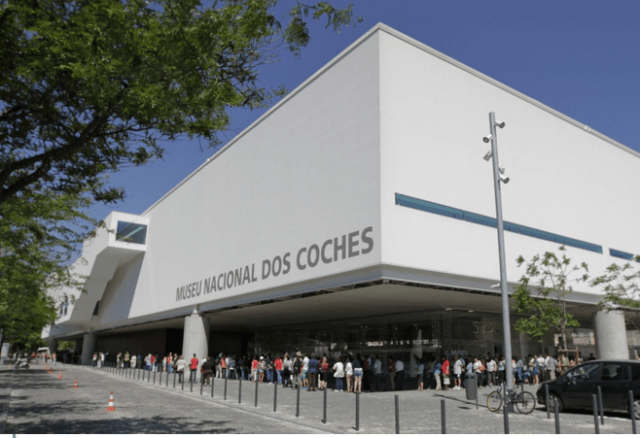
New coach museum in Lisbon. (Thomas Meyer/Demotix/Corbis)
I’d hate to be the architect of a new building that was described this way:
With its white cobblestone pavements, Moorish-tiled facades, and pastelarias (cakeshops) on every corner, visitors to Lisbon frequently feel that they’ve stumbled into a fairytale. So it comes as a surprise to discover that the new National Coach Museum – home to 70 glass, gilded and glamorous historic carriages – puts a brutalist end to such fabulist fantasies.
“Fantasy Carriages Sparkle in Lisbon’s New Coaching Museum,” by Valerie Waterhouse in Travel + Leisure, is not exactly a ringing endorsement of the new museum, whose theft of Portuguese treasures from the old coaching museum in a glorious old palace sparked so much outrage and controversy a year or so ago.
Last summer I seconded the public’s outrage in “Lisbon coach catastrophe,” which got thousands of hits.
Citizens were right to feel wronged. Their nation’s coaching heritage used to be exhibited in a “much-loved, neo-classical Royal Riding Arena, which has acted as the 110-year-old museum’s main home until now.” Now refers to the new clunker by Brazilian celebrity architect Paulo Mendes da Rocha, who is, of course, a Pritzker Prize winner – which in plain language means designer of clunkers.
Waterhouse describes the new museum as “brutalist,” lower-casing the first letter, no doubt because she confused the modernist style widely known as Brutalism with the brutal effect that the style has on users and passersby. It comes from the French term for rough concrete, béton brute. The Penguin Dictionary of Architecture describes Brutalism as “handled with an overemphasis on big chunky members which collide ruthlessly.”
(Sometimes I get the impression that the widespread effort to burnish the reputation of Brutalism has caused an unintentional, and understandable, confusion in the public mind that modern architecture is a form of Brutalism rather than the reverse. In a way, it is.)
Waterhouse, who is certainly not riding the sort of hobby horse I ride on this subject, tried to put the best face possible on the new museum, suggesting twice that the museum’s architectural sterility allows its contents to shine all the more. But what about “form follows function”? Well, certainly when the old saw is invoked, form usually does not follow function. And form surely does not follow function here.
Thankfully, the old Riding Arena remains open to the public, and some of the coaches remain. Better to view eight coaches in a jewel of a museum, built in 1786, than 8,000 coaches in a “brutalist” box. The jewel is across the street from the box, and the box certainly diminishes the setting of the jewel.
I cannot resist a parting shot, from Valerie Waterhouse’s piece:
Visitors approach across a cobbled plaza, and enter a vast steel, glass and concrete box – raised on columns – via elevators or unadorned stairs. Once inside, the airy space has little to distinguish it, apart from a series of trapezoidal windows, some of which frame the Tagus river outside.

Former Portuguese coach museum in Lisbon. (dreamstime.com)

Inside the old coach museum. (lisbonstopover.com)



Check out the recently renovated The Breakers Stables & Carriage House in Newport. It features many of the coaches, carriages, and sleighs from the collection of the Vanderbilt family. Worth a visit and an article.
LikeLike